
A WebGPU
Graphics Device
for R
@yutannihilat_en
What Is
“Graphics Device”?
What is “Graphics Device”?
R’s standard library provides graphics-related functionalities:
High-level functions (e.g.
plot()) that draw nice plot automagically.Low level functions that work behind high-level ones (e.g.
grid.lines()); they does very primitive operations like drawing a line or a rectangle.
Graphics device is the layer that actually executes those low-level operations.
Examples of how to use graphics devices
- To put simply, we can change the output (e.g. PNG, SVG) by changing the graphics device
Figure
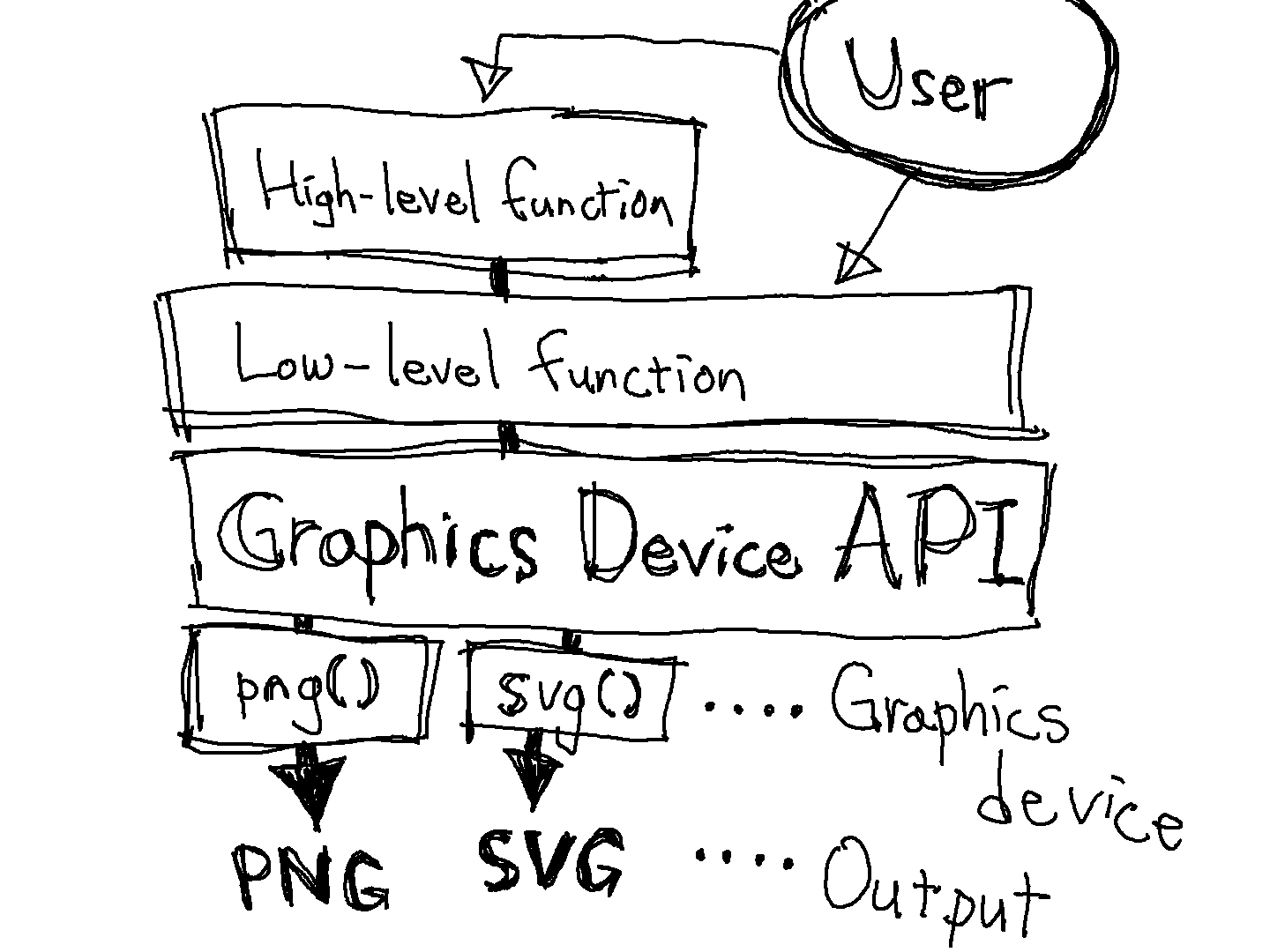
Want your own graphics device? Implement it!
The operations are translated via Graphics Device API
We can create a graphics device by implementing the Graphics Device API. For example…
A device that drives pen-plotter
A device that translate the drawing operations into sounds
A device that ignores all the operations (null device)
Examples of Graphics Device API
circle() |
Draw a circle |
rect() |
Draw a rectangle |
line() |
Draw a line |
text() , textUTF8() |
Draw a text |
metricInfo() |
Return the width and height of the text |
clip() |
Set the clipping range |
activate(), deactivate(), close() |
Hooks that are called when a device is opened or closed. |
What Is WebGPU?
What is WebGPU?
WebGPU exposes an API for performing operations, such as rendering and computation, on a Graphics Processing Unit. (ref: WebGPU spec)
As the word “Web” indicates, it’s designed for web browsers.
But, it doesn’t mean it’s only for the Web1
Why WebGPU? (1) Portability
There already exist several graphics APIs that utilize GPU. However, different APIs are required for different platforms / OSes.
OS Graphics API Windows Direct3D 12 (or 11), Vulkan macOS Metal (, MoltenVK) Linux Vulkan So, we need another abstraction layer over them.
Figure
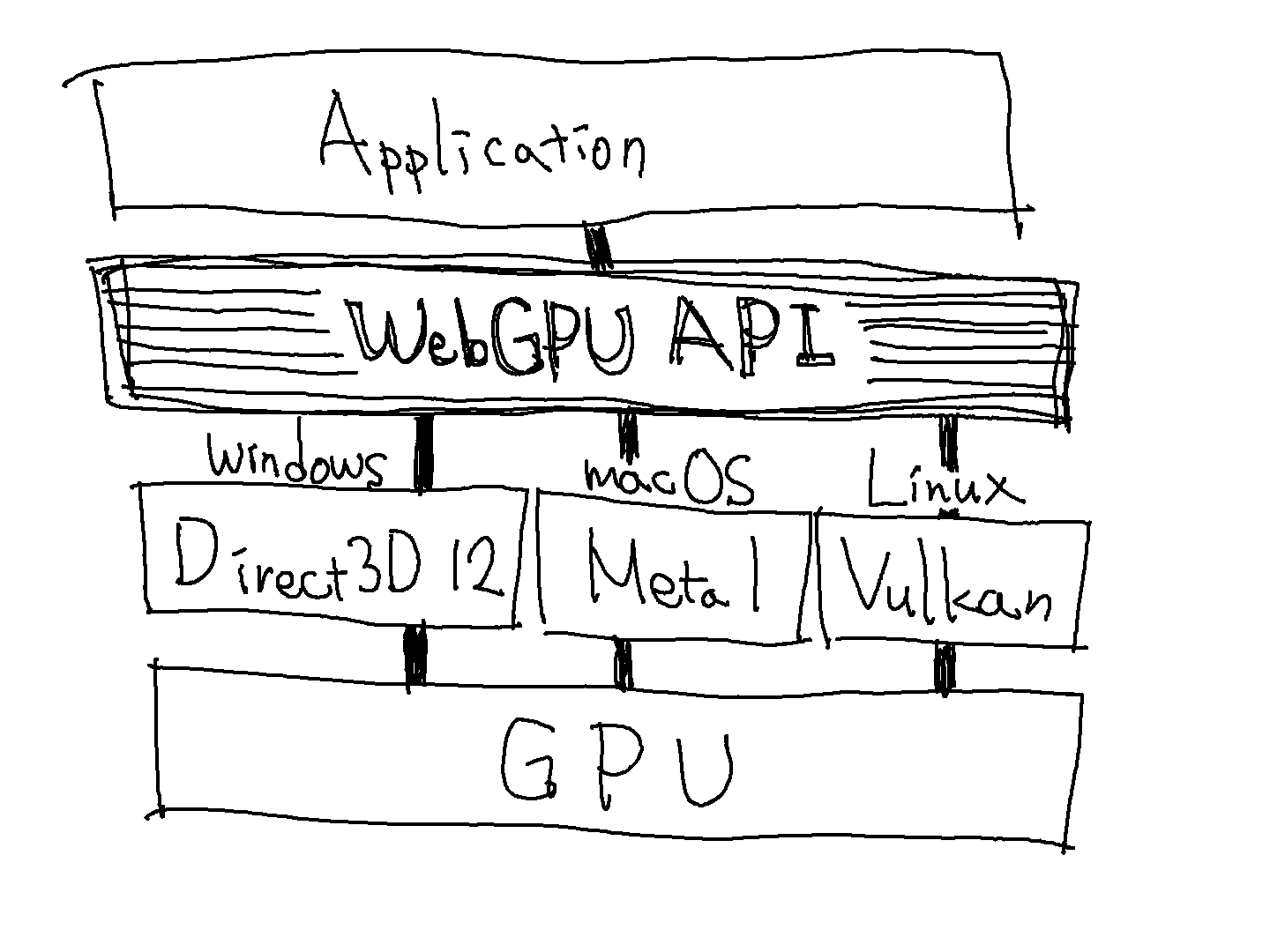
Why WebGPU? (2) Security
(This point is less important in the context of implementing R’s graphics device)
Considering the usage on web browsers, the API should be safe. The API should protect users from problems like malicious attacks and unexpected crashes.
In terms of this, the native APIs are too raw.
Isn’t Vulkan enough for it?
Isn’t WebGL or OpenGL enough for it?
-GL APIs are great in portability (actually WebGPU implementations use OpenGL ES as one of the backends)
However, -GL APIs’ design is not in line with modern GPU architectures, which causes computational and mental overhead 1
WebGPU implementations
Dawn (C++)
wgpu (Rust)
- gfx-rs developers1
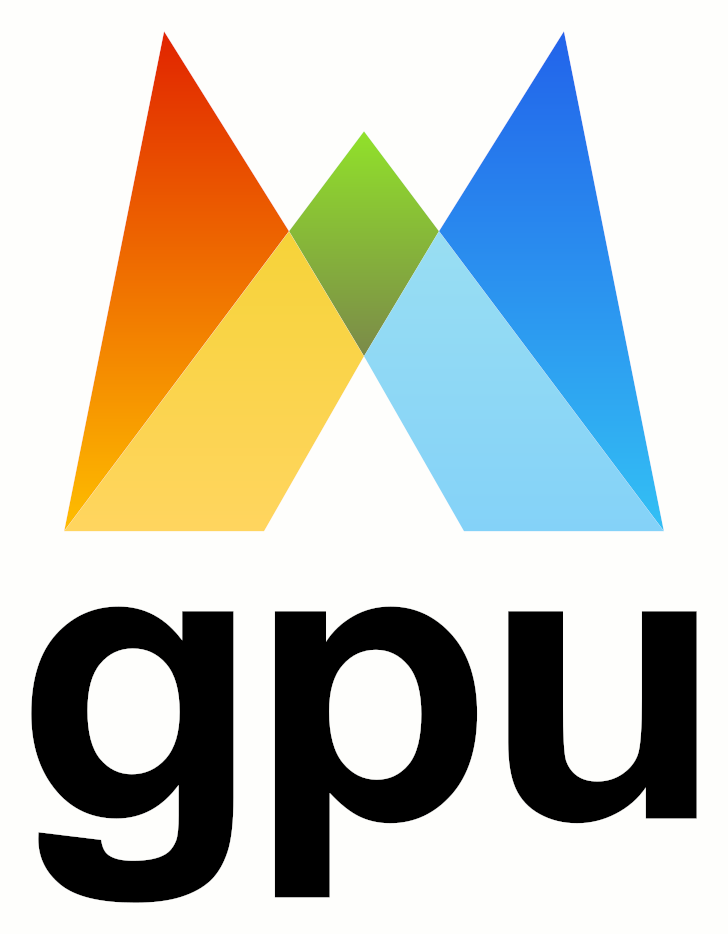
wgpu
Learn Wgpu
Learn Wgpu: https://sotrh.github.io/learn-wgpu/
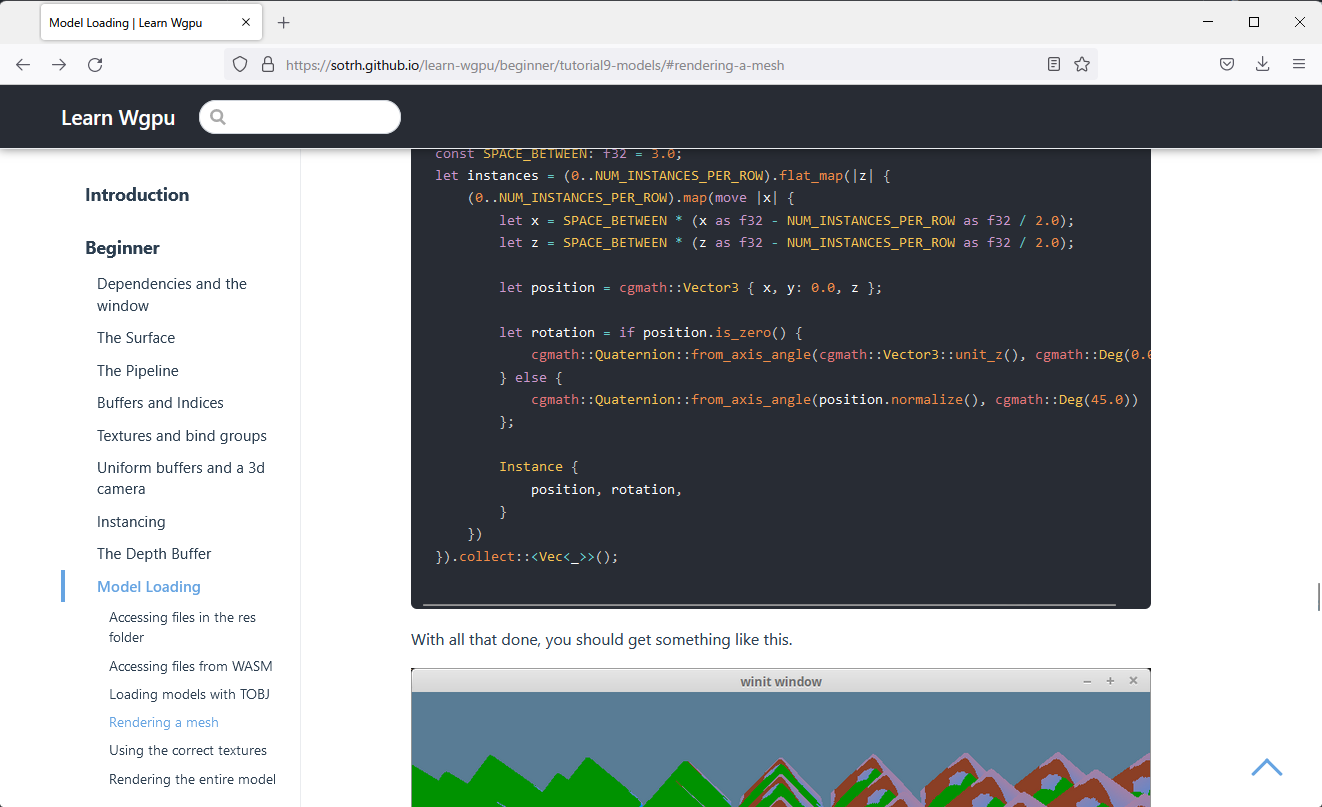
But.., why WebGPU for a graphics device for R?
Why not! I want a graphics device that can be messed up with shader magics (e.g. post effects)
One serious reason is that there’s no an interactive graphics device that’s available on all of macOS, Linux, and Windows1
Btw,
How can R call the Rust-implemented graphics device?
How can the Rust-implementation access data contained by R?
extendr
Communication between Rust and R
R has the C API
Rust can use FFI
→ Generate a Rust bindings for R’s C API by rust-bindgen, and wrap it nicely
Figure
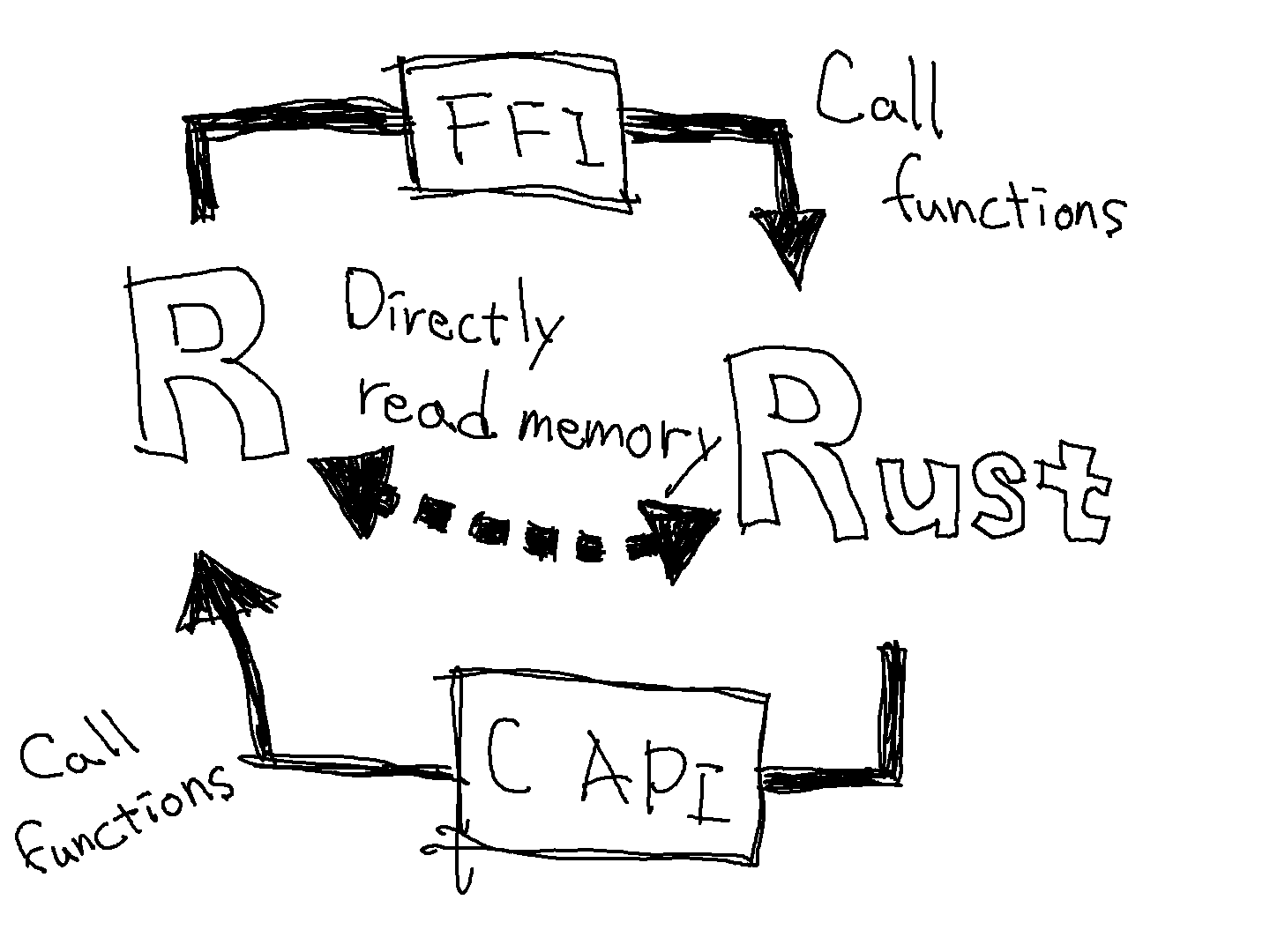
extendr
“A safe and user friendly R extension interface using Rust”
Developed since 2020
(Although I know almost nothing about Rust, I’m one of the maintainers…)
Using Rust code in R packages
https://extendr.github.io/rextendr/articles/package.html
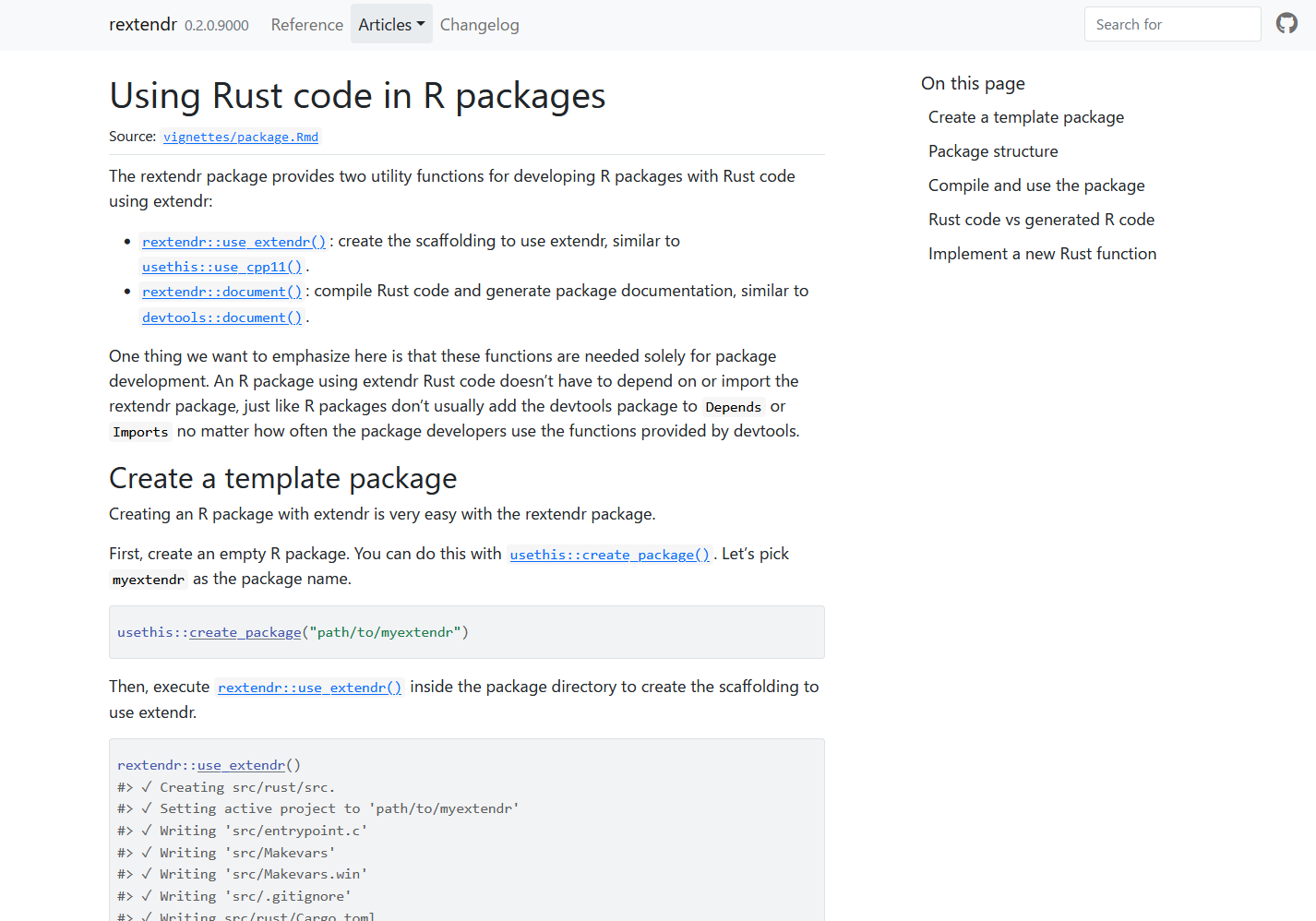
Implement A Graphics Device
How to draw shapes on GPU
- Convert the shape into the mesh of triangles (tessellation)
- Find or invent a signed distance function (SDF) that represents the shape
- Rasterize the shape and treat it as texture
Tessellation
- GPU can draw only triangles, so we need to chop up the shape into triangles on CPU
- In Rust, lyon is the popular crate for this
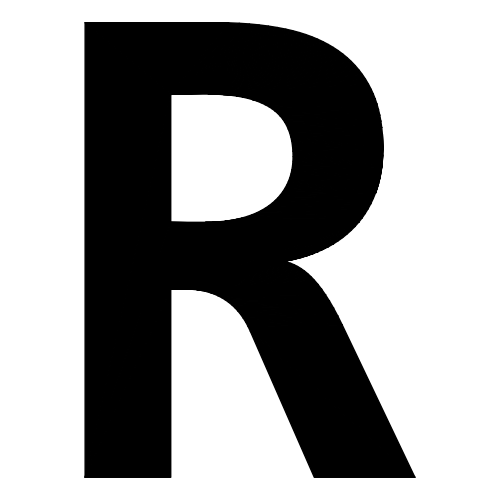
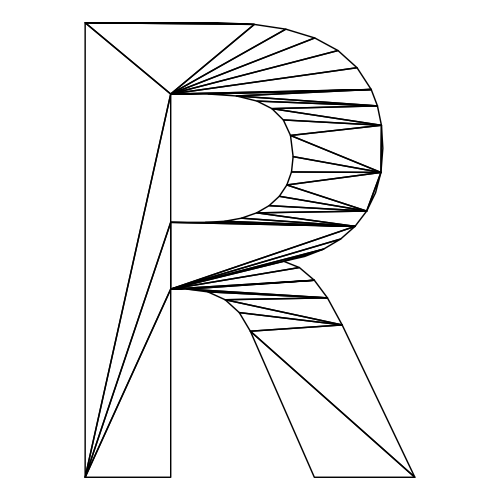
SDF
- A function that returns the distance from the outline of the shape. GPU can use this to determine whether the location is inside or outside of the shape (i.e. the pixel is drawn)
A list of popular 2D SDF functions
https://iquilezles.org/articles/distfunctions2d/
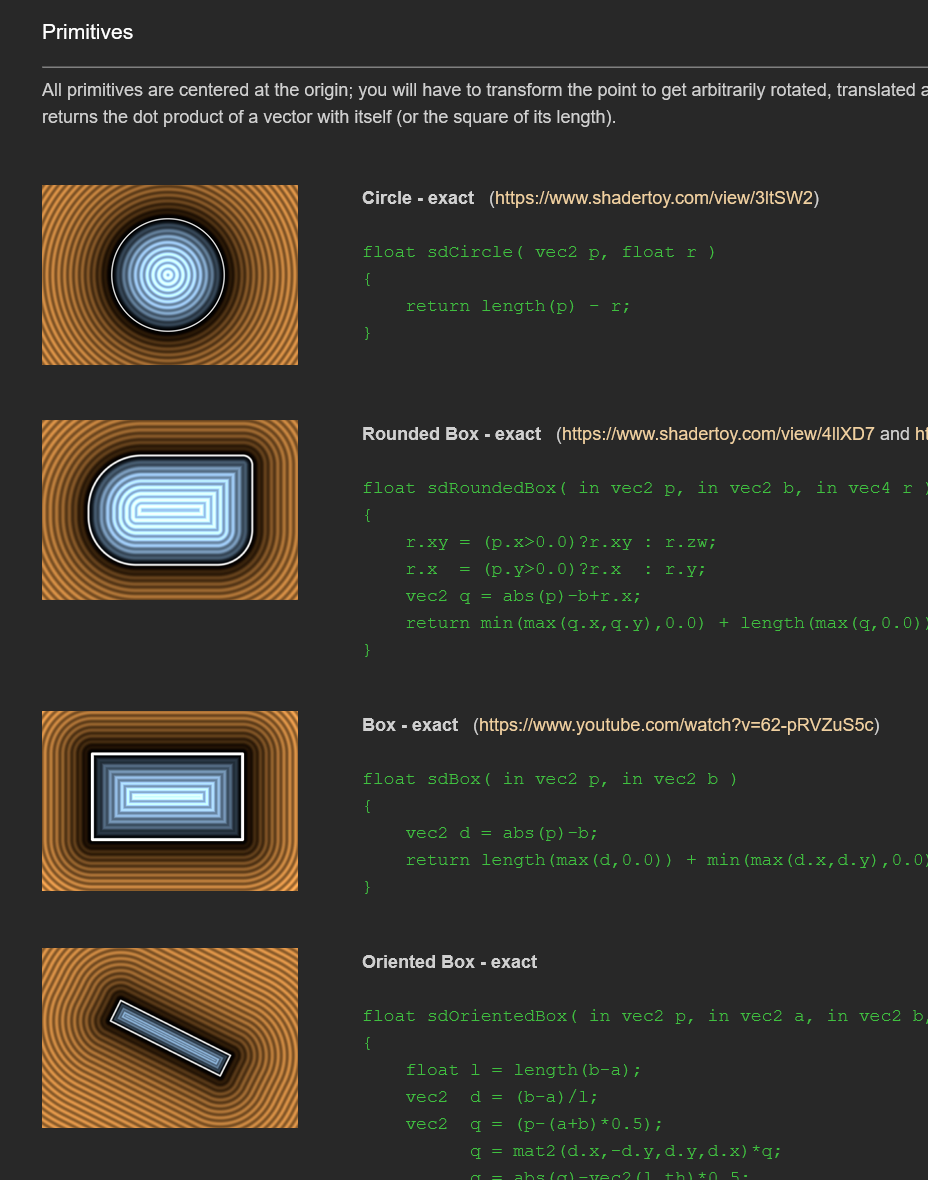
Rasterization
(Not implement yet)
In my implementation, texts are rendered with tessallation, but it can be with rasterization.
Current implementation
| API | Implementation | Reason |
|---|---|---|
line() |
tessellation | |
circle() |
SDF | A circle is drawn repeatedly (e.g. scatterplot), so SDF should be more efficient |
rect() |
tessellation | |
text() |
tessellation | SDF font might be more efficient, but I don’t know how to implement it… |
raster() |
(not implemented yet) | |
| … |
Figure

Result
It works!

A (not so) fancy post effect
Invert colors
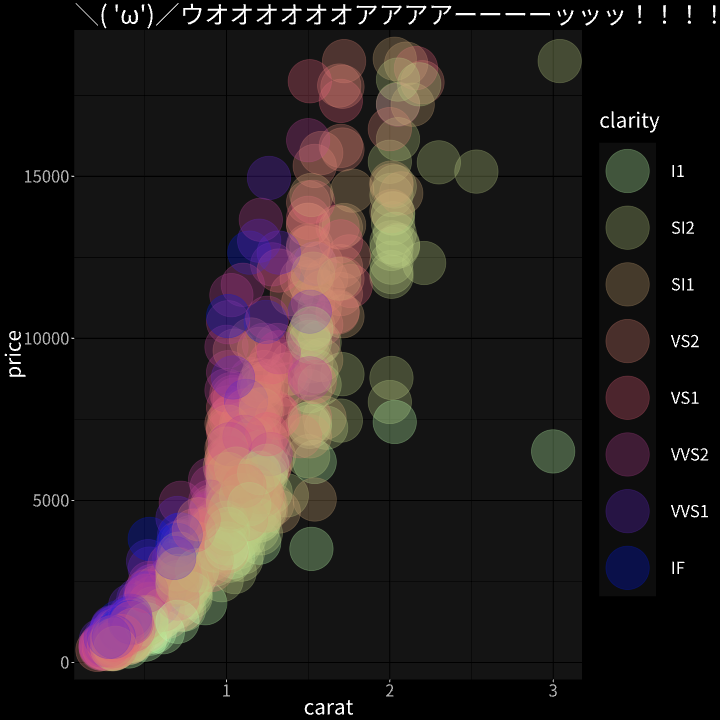
A fancy post effect
Retro CRT monitor effect (based on a blog post by Babylon.js)
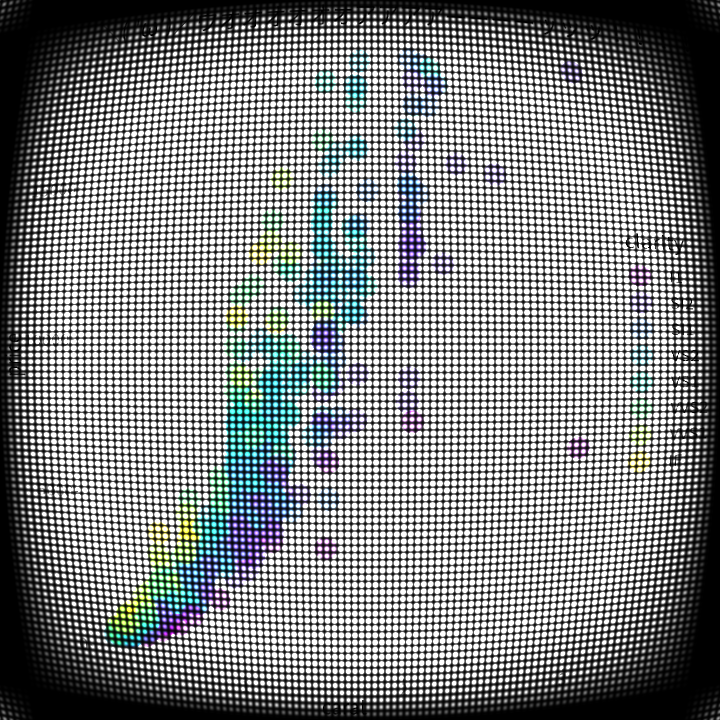
WGSL code for Retro CRT monitor effect
let CURVATURE: vec2<f32> = vec2<f32>(3.0, 3.0);
let RESOLUTION: vec2<f32> = vec2<f32>(100.0, 100.0);
let BRIGHTNESS: f32 = 4.0;
let PI: f32 = 3.14159;
fn curveRemapUV(uv_in: vec2<f32>) -> vec2<f32> {
var uv_out: vec2<f32>;
// as we near the edge of our screen apply greater distortion using a cubic function
uv_out = uv_in * 2.0 - 1.0;
var offset: vec2<f32> = abs(uv_out.yx) / CURVATURE;
uv_out = uv_out + uv_out * offset * offset;
return uv_out * 0.5 + 0.5;
}
fn scanLineIntensity(uv_in: f32, resolution: f32, opacity: f32) -> vec4<f32> {
var intensity: f32 = sin(uv_in * resolution * PI * 2.0);
intensity = ((0.5 * intensity) + 0.5) * 0.9 + 0.1;
return vec4<f32>(vec3<f32>(pow(intensity, opacity)), 1.0);
}
fn vignetteIntensity(uv_in: vec2<f32>, resolution: vec2<f32>, opacity: f32, roundness: f32) -> vec4<f32> {
var intensity: f32 = uv_in.x * uv_in.y * (1.0 - uv_in.x) * (1.0 - uv_in.y);
return vec4<f32>(vec3<f32>(clamp(pow((resolution.x / roundness) * intensity, opacity), 0.0, 1.0)), 1.0);
}
@vertex
...snip...
@fragment
fn fs_main(
vs_out: VertexOutput
) -> @location(0) vec4<f32> {
var remapped_tex_coords = curveRemapUV(vs_out.tex_coords);
var color: vec4<f32> = textureSample(r_texture, r_sampler, remapped_tex_coords);
color *= vignetteIntensity(remapped_tex_coords, RESOLUTION, 1.0, 2.0);
color *= scanLineIntensity(remapped_tex_coords.x, RESOLUTION.y, 1.0);
color *= scanLineIntensity(remapped_tex_coords.y, RESOLUTION.x, 1.0);
return vec4<f32>(color.rgb * BRIGHTNESS, 1.0);
}Repository
Remaining issues
If Rust panics, the R session crashes immediately so it’s hard to debug. I need to decouple the implementation from R-related codes.
Interface to accept shader code from users. Currently I have no idea how to express the operations that needs to be applied repeatedly (e.g. bloom effect)
Lessons learned
- I thought the device is super fast because it utilizes GPU. But, in reality, there are many overhead for preparation (e.g. tessallate the shape, allocate buffers to communicate data between GPU and CPU) before GPU actually works. To draw only a few plots, CPU wins.
References
Learn Wgpu: https://sotrh.github.io/learn-wgpu/
extendr: https://extendr.github.io/
Licenses
- The dawn logo by Google is licensed under CC-4.0-BY (ref: https://dawn.googlesource.com/dawn/+/HEAD/docs/imgs/)
- The wgpu logo by gfx-rs developers is licensed under MIT (ref: https://github.com/gfx-rs/wgpu/blob/master/logo.png)
- The extendr logo by extendr developers is licensed under CC-4.0-BY-SA (ref: https://github.com/extendr/artwork)

